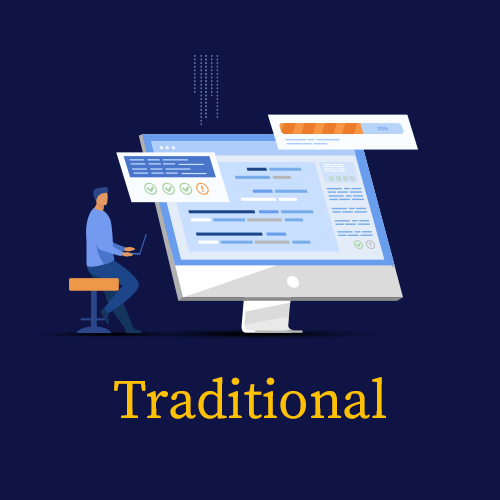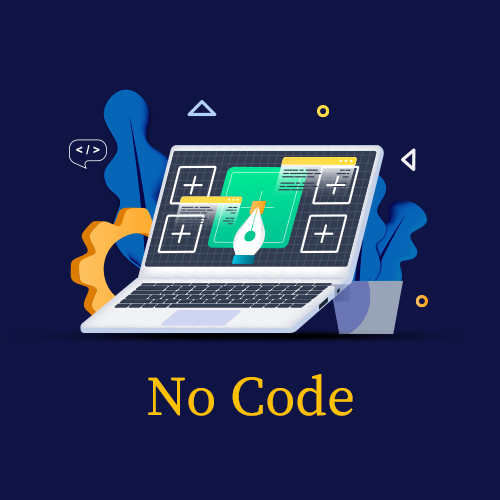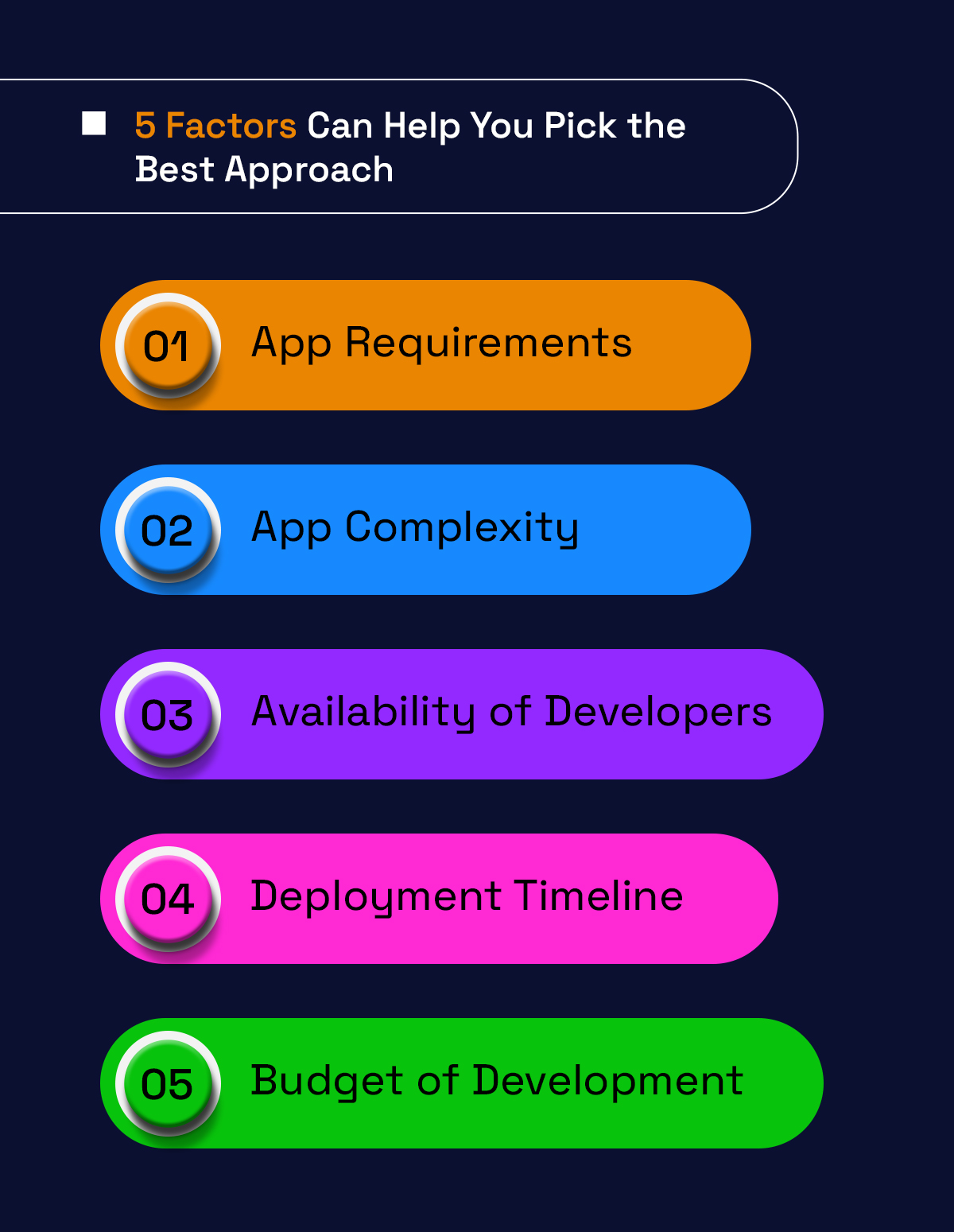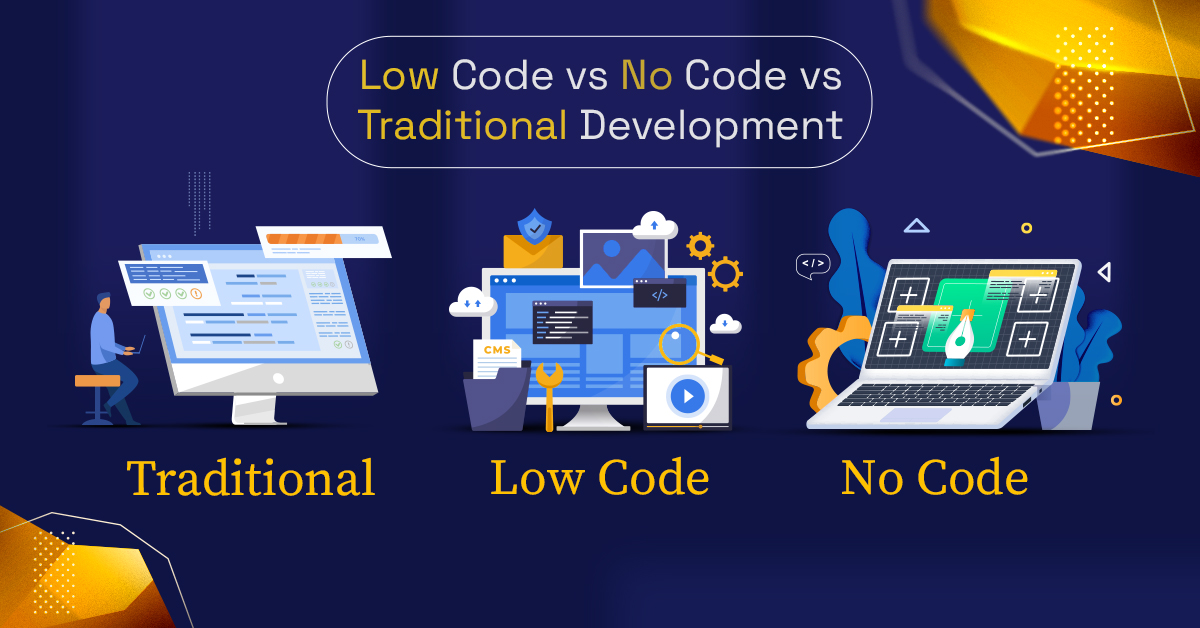No Code, Low Code or the Traditional Way: What Would You Choose?
In 2022 alone, 142.6 billion apps and games were downloaded (BusinessofApps). The segment-wise revenue from mobile applications is estimated to reach $613k billion by 2025 (Statista).

More businesses have planned their mobile application to increase reach and boost engagement. They want to accelerate the development with effective measures to gain an edge over the competition and ensure the first-mover advantage.
The right mobile app development tools can enhance the developer’s efficiency, offer them suitable measures to create suitable applications and build a sustainable solution. From minimizing the coding needs to offering smooth testing solutions, they are a developer’s friend.
No code and low code tools have gained an incredible market share, owing to their ability to transform your ideas into solutions with minimal effort.
In this guide, we will look at the differences between no code, Low Code and traditional development. We will also understand the ways to choose the right approach for your next mobile application project.
What is Traditional Development?

Traditional or custom software development follows a thoroughly defined process using the right methodology. The end-to-end cycle consists of planning, development and testing. Each phase has a separate resource, timeline and budget. You will also need unique tools and infrastructure to complete these stages.
The tech stack would include traditional databases, frameworks and engines. It comprises the client-server development philosophy, where the front-end and back-end developers have different jobs.
There are off-the-shelf solutions that you can customise to build apps. However, you can also build the solution from scratch using the appropriate tech stack and tools.
| Pros | Cons |
| You enjoy total ownership of the software solution you have developed. | If you go with native app development, you will notice an increase in the overall cost. |
| A start-to-end development process that makes creating the software easy and hassle-free. | Deploying the application into the market may take a while, as the development time is higher. |
| You can add unlimited functionality and features to the mobile application, thus enhancing the usability and experience. | You might need to hire skilled developers to ensure a smooth transition of your idea into a mobile application. |
| With a traditional development approach, you can enhance the security of the mobile application. | If you choose native app development, you may release a solution for the particular OS. |
What is Low-code Development?

Low code development uses visual models to create your mobile applications. You can use drag-and-drop editors to create visually appealing and functional mobile apps. With low code development, you can improve the agility and productivity of the application with appropriate code solutions.
With minimal coding requirements, this approach allows you to deliver applications faster. It comes with a GUI that removes the elemental dependencies of traditional development methods. People with a tech background but minimal coding knowledge can use the frameworks to create the application. Let's look at the benefit of low code development.
| Pros | Cons |
| Develop your applications and deploy them before your competitors do. | You can be stuck with a single vendor, which can cause trouble if the tools don’t support your needs. |
| It Helps you be more agile and in tune with the shifting development requirements. | Limited customisation possibilities with these tools as there are pre-built elements and libraries. |
| Fewer coding efforts go into pulling off your application with a common code approach. | Can handle simple development; however, it can cause issues when extending the approach to complex requirements. |
| You can create cloud-based solutions with low-code tools. |
What is No-code Development?

No code development is a visually integrated development approach using libraries and visuals to build the mobile app. The tools possess pre-coded drag and drop interface that can be placed to create the interface.
The tools use the software models to determine how the system should work and conduct. As a developer or business analyst, you can add features and functionality to your application without worrying about the logic or backend. The app elements have a defined functionality; you simply need to choose from them.
| Pros | Cons |
| It provides low-cost development for companies. | Specific features like audio/video support may not be available with the no-code platforms. |
| You get greater agility and better productivity with these tools. | The pricing, terms and other factors depend on your chosen platform. |
| Customise the application to suit your application requirements. | Few platforms that offer no code development may not extend the required features/functionality. |
| Extensive support for the analysts and others with limited technical knowledge to create a mobile application. | You may face security issues while developing mobile applications. |
Let’s compare the three code development approaches to understand them better.
No Code vs Low Code vs Traditional Development: A Quick Comparison
1. Speed of Development
This parameter can help determine how soon you can build an application using the particular approach and deploy it to the app store.
Traditional Approach: Whether you choose a cross-platform or native app development approach, you might take a while before launching the application. The dedicated process and streamlined operations ensure you follow the best practices before releasing.
Low Code: As you might have to complete a few coding steps and include the logic development for your business app, it is not completely fast. You might notice a 2x speed when compared with traditional development.
No Code: This is the fastest development approach. With this approach, you can increase the deployment speed by 8x, as you don’t need to code or build the logic.
Decision: The no-code development is the fastest approach. It helps you deliver an MVP or release the idea before anyone else, giving you an edge over the competition. In low code/no code vs traditional development, no code is considered the best method.
2. Testing and Quality
This parameter will help understand if the selected approach can help with in-depth testing of the application. The parameter determines if you can get a good quality application by using a particular approach.
Traditional Approach: This approach sets a separate phase for application testing and quality assurance. You get to test the app during development and after the entire process to ensure a bug-free, high-quality and performing application.
Low Code: You code parts of the application but mostly depend on pre-coded libraries and components. As a result, your scope of application testing has limited
No Code: You may not be able to test the entire application as you depend on the pre-developed and tested components.
Decision: The traditional development approach wins in this case. It ensures a fully tested application, ready for release to the app stores.
3. Accessibility
This parameter helps determine if you can access the code for the particular application. Code access is important for testing and customisations.
Traditional Approach: This approach allows you complete access to the code. You can easily test the code and customise it to suit your requirements.
Low Code: You can only access the code you have written. The parts of the application that use the visually integrated environment are inaccessible to the developers.
No Code: You cannot access the code used to build the mobile application. You use the building blocks that are pre-coded to create the mobile app.
Decision: When it comes to accessibility of the code, you should use the traditional approach. This is the approach that fits your accessibility requirements.
4. The Complexity of Projects
This parameter will judge which approach works best when building complex and highly complicated projects.
Traditional Approach: The agility, flexibility and extensive support tools that come with the traditional approach allow you to build complex apps. You can create apps with varied features that can access the video and audio functionality of your app.
Low Code: This development approach limits your ability to develop complex projects. You can use them to build small to medium-sized applications.
No Code: You can create MVPs or app concepts with this approach. It is not suited for very complex applications.
Decision: If you are planning MVPs, you should go with no code development. However, if you are planning highly complex applications, you can use the traditional development approach.
5. ROI
This parameter helps understand what would be the returns in terms of conversion, downloads and other aspects with the particular approach.
Traditional Approach: You will get a finely designed, intuitive and experiential application at the end of this approach.
Low Code: This approach offers a bit of both worlds. However, it is used to build simple applications and check if the market is ready for the solution.
No Code: The returns from this approach would mostly be validation. You can convert your concept into a system that is validated by the target market.
Decision: You get better profits and returns when you invest in the traditional mobile app development approach.
6. When to Use
This parameter will help you decide if you can use it to build a full-fledged app solution, frontend or MVP.
Traditional Approach: Traditional approach allows developers to create mobile applications for the front and backend. It ensures complete development.
Low Code: You can create the front or interfaces for the mobile application with this approach.
No Code: This approach allows you to create the client side or the interface designs.
Decision: To enjoy full development, you should use the traditional approach. However, if you want to design interfaces, you can choose from low-code or no-code approaches.
7. Skillsets
This parameter helps define the skills you need for the particular app development approach.
Traditional Approach: You need highly skilled frontend and backend developers to complete the application development with this approach.
Low Code: You will need some basic coding knowledge and technical know-how to use the low code tools.
No Code: People with no technical background or coding knowledge can use this approach.
Decision: No code is a clear winner, as anyone can use the tool to build an application out of the idea and deploy them.
8. Cost
This parameter will help determine how much you need to spend on the application development. You will identify the cost of development for each of the approaches.
Traditional Approach: This can be expensive as you need the resources, infrastructure and tools to build the application. As it concludes both frontend and backend development, you might need to spend more time developing and testing the application. This will eventually increase the cost.
Low Code: You will need fewer skilled resources and low code tools. Your app development is majorly dependent on the pricing of the tool. It can be expensive if you choose a tool with high-range plans.
No Code: The cost of development is entirely dependent on the cost of the tool. You can choose to go with low-cost tools to create your application.
Decision: Low code or no code tools win as they offer cost-effective mobile app development solutions.
9. Maintenance
This parameter looks at the overall maintenance requirements for the mobile application. This includes design, code and other mobile app maintenance needs.
Traditional Approach: As you have coded the application from scratch, you might need to invest in app code maintenance. This can take up a few resources, tools and time.
Low Code: The company that offers the low code tool will take care of the maintenance requirements. The code is pre-built using the apt programming languages.
No Code: You need not handle the code or library maintenance, as the company that owns the tool will manage it.
Decision: For low maintenance needs, you should opt for low or no code tools.
Let’s look at how to choose the best-fit approach for your next app development approach.
How to Choose the Approach that Best fits your Needs?
The factors can help you pick the best approach from the three we have discussed.

1. App Requirements
The mobile app requirements play a pivotal role in deciding whether to go with the traditional approach or no code. If you need to add basic minimum features and develop a low-cost application, you can go with no code or low code. However, you should go with traditional app development to create a full-fledged solution for multiple operating systems with defining security. You should check if the code development platforms and traditional programming can meet the app development requirements.
2. App Complexity
The complexity of the mobile application also helps decide which approach to choose. You should opt for the traditional approach to release a highly complex application. However, to deliver a simple MVP, you can choose the no-code or low-code tool to deliver a simple MVP. It should meet the operational and business process requirements posed by your business.
3. Availability of Developers
You will need to choose a development approach based on the availability of the talent pool. For instance, if you don’t have resources to help with front-end development, you might need to go with no-code tools. However, if you have in-house resources, you can choose to build with a traditional development approach.
4. Deployment Timeline
The timeline for your application plays a pivotal role in defining the approach. If you want to release an application early, you might want to choose between no-code and low-code tools. However, if you have enough time, you can choose to build using traditional development.
5. Budget of Development
If you are on a tight budget, your no-code tools can help you release an app with minimal expenses. You need to invest in a tool and can build the application yourself. However, if you plan to have a good budget, you can choose to go with traditional app development.
How can Expert App Devs Help with All Approaches?
Expert App Devs have the right skills and understanding of traditional and low-code approaches. We can partner with you to use one of these approaches and deliver the ultimate solution. Our professional developers have an understanding of the app development requirements and scope of the study.
Our team has the infrastructure and tools with defined plans and strategies that can help improve the delivery of the solution.
Our customer support and maintenance solutions ensure you don’t have to worry about code maintenance or upgrading the solutions. We also ensure smooth transitions from an MVP to a complex application.
Conclusion
Traditional vs low code vs no code is a debate that will continue whenever any business or developer tries to identify the best suitable approach. You learned how each of these approaches works and understood how they help process development. You will need resources to maintain your traditionally developed app, while the no code app requires no maintenance.
Moreover, you might find including security a hassle with the no-code app development approach. Each approach has its use case and pros. You must choose the approach that best fits your requirement and resource situation.
Expert App Devs is a leading mobile app development company. Connect with our development team to translate your app idea into a working mobile application.
 Vaibhav Patel
Vaibhav Patel




